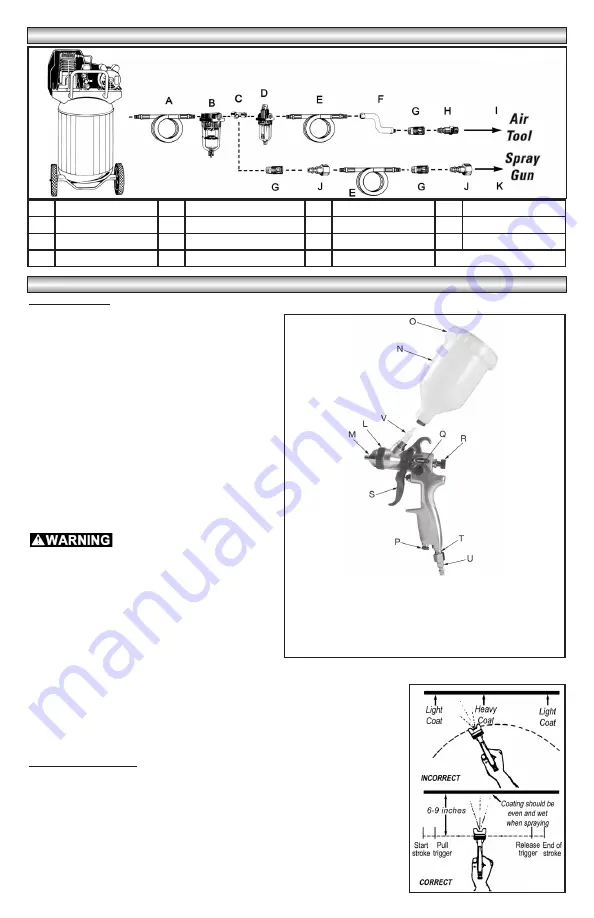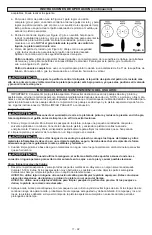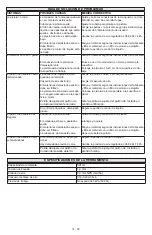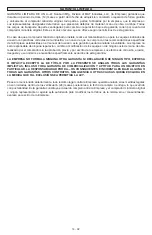
4 - ENG
4 - ENG
OPERATING INSTRUCTIONS
TYPICAL INSTALLATION
Before Spraying
1. As a standard practice, drain water from the air
Figure 2
L Air cap nut
R Fluid control
M Air cap
S Trigger
N Cup
T Air inlet port
O Cup cover
U Female connector
(put
Teflon® tape on the male threads)
P Air control
V Fluid filter
Q Pattern control
compressor tank and air lines prior to use each day
(reference your compressor operators manual for
detailed instructions).
NOTE: Failure to install
appropriate water/oil removal equipment may
result in damage to the spray gun or workpiece
(see
Figure 1).
2. Install a 1/4” NPT female connector (included in
accessory kit) onto the air inlet port of the tool.
(see Figure 2).
Note: Use Teflon® Tape on all
threaded connections.
3. Attach air supply line to 1/4 NPT female connector
plug.
4. Start the compressor and set the regulator to
30-50 PSI.
NOTE: Be sure there is sufficient
hose connected between the gun and air
supply to comfortably reach the work surface.
This spray gun is designed to
operate best at pressures between 30-50 PSI.
Never attempt to operate this spray gun at
pressures in excess of 50 PSI.
5. Mix material according to the manufacturer’s
instructions, adding thinner if needed. Mixture
should be smooth and easily pourable. Lumps or
foreign objects should be removed by straining
through a suitable paint filter or cheesecloth.
6. Insert a fluid filter into the fluid inlet (see Figure 2).
7. Attach the paint cup to the gun.
8. Remove the paint cup cover and fill the cup about 3/4 full with paint then
Figure 3
replace the cover.
NOTE: If using the spray gun for the first time, fill the
paint cup with thinner and spray into a grounded metal waste container
to flush the gun and cup of any impurities that may have accumulated
during assembly and shipping.
Spraying Instructions
1. Begin spraying. Hold the gun about 6 to 9 inches from the work surface
and while moving the gun from side to side, depress the trigger to begin
applying material. To avoid blobs, runs and lap marks, keep the gun in
motion at all times before, after and while the trigger is depressed (see
Figure 3). When spraying from the left to right, use the vertical pattern and
when spraying from the top to bottom, use the horizontal pattern (see Figure
4). Practice painting on a piece of scrap material or cardboard until the test
coating results are acceptable, making adjustments as follows:
Key
Description
Key
Description
Key
Description
Key
Description
A Air hose
D In-line Oiler
G Quick Coupler
J Female Connector
B In-line Filter
E Air Hose
H Male Connector
K Spray Gun
C Tee Fitting
F Whip Hose
I Air Tool
Figure 1





































